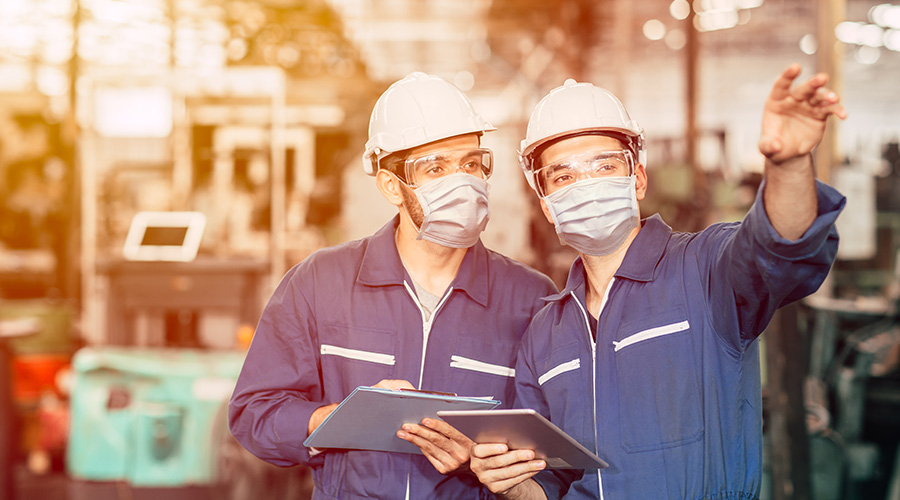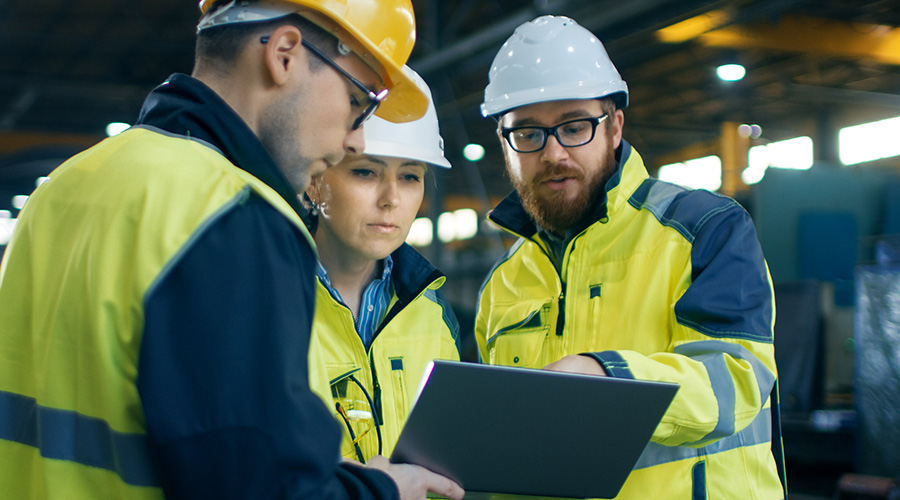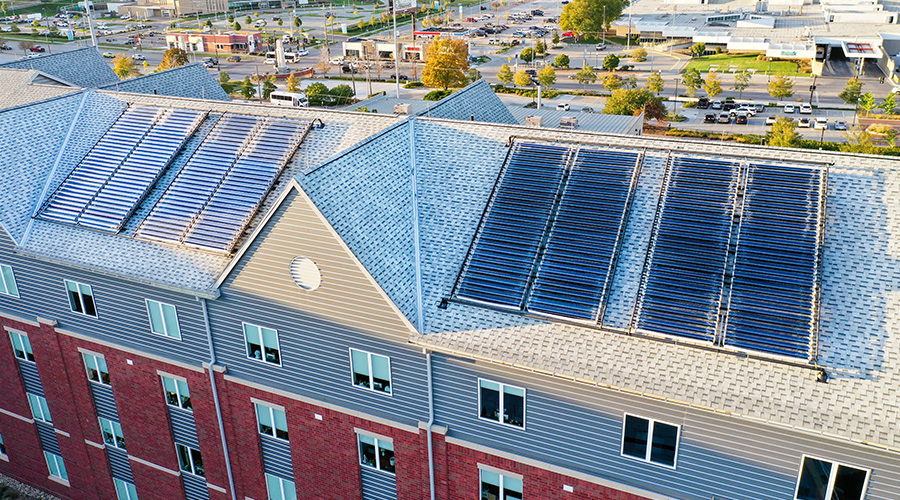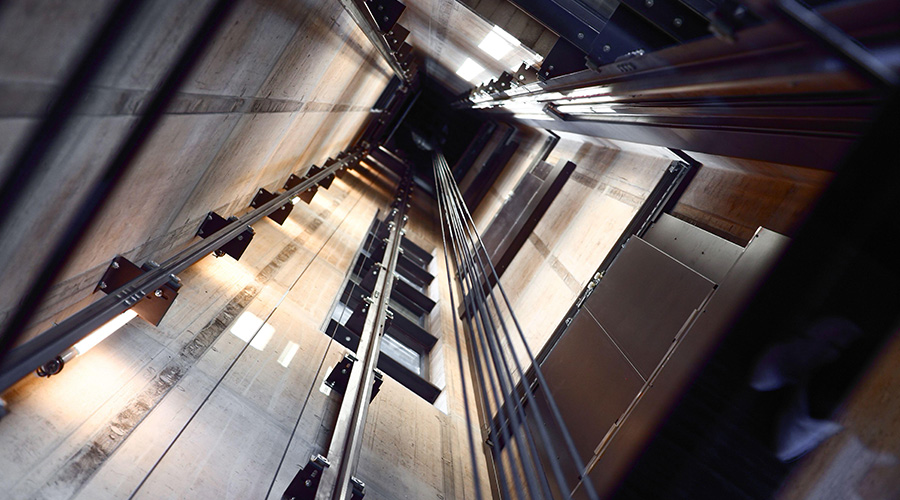
Four Years Later: How COVID-19 is Still Impacting Facilities
Facility managers saw their professions turn upside-down due to the pandemic. It's still affecting them in several ways February 26, 2024
By Dave Lubach, Executive Editor
Roughly four years ago this time, the COVID-19 pandemic began impacting life in the United States.
Within a matter of weeks starting in late February/early March 2020, Americans were growing comfortable with concepts like distance learning and working from home. More importantly, and sadly, the pandemic resulted in hundreds of thousands of deaths and millions of people being infected with the coronavirus as hospitals and healthcare workers across the country were overwhelmed by the influx of patients.
While the country has essentially moved on from the pandemic, its effects are still felt in the facilities management world. As we remember the fourth anniversary of the pandemic and reflect on its impact, we gathered eight facility leaders to get their thoughts on how the pandemic has affected their jobs and the industry in general.
The participating facility managers were Advisory Board Members from Building Operating Management and Facility Maintenance Decisions magazines. The pandemic question is part of a larger facility trends conversation for an ebook published in our fnPrime membership.
We asked our panel how the pandemic affected their facilities, and their jobs, four years later.
Kris Byk, Director of Operations, Watchung Hills High School, New Jersey: “COVID actually helped in a positive way with how we run our facility. It was eye-opening for better cleaning practices, better communication, better networking (to get a good price), opened the technology aspect of Zoom meetings/Google meets (aside from its impact on budgeting). Thus, it made the overall facility more efficient.”
Brian Cowperthwaite, Senior Director, Facilities Services Operations and Maintenance, University of Chicago: “The COVID-19 pandemic gave many facilities teams a greater voice and seat at the table. Prior to COVID, I can’t remember many instances of being asked about air changes or detailed inquiries concerning building filtration. That has all changed now and people, our campus partners, are fully aware and educated on the importance of many preventive maintenance processes.”
Machion Jackson, Deputy Superintendent, Operations, Detroit Public Schools Community District: “We are more intentional about cleaning standards, maintenance of mechanical equipment and regular filter changes. Combined, these standards have significantly increased operational costs.”
Doug Pearson, Associate Vice President, Facilities Planning and Operations, Kent State University: “We have maintained a higher consciousness for indoor air quality. Keeping methods and processes in place that were implemented during the pandemic, like better filtration, longer run time on air handling units, and being more conscious of telling people to stay home if they even think they are sick. We have permanently instituted flexible working hours and partially work-from-home programs were possible to improve recruitment and retention of good employees.”
Kristin Podwojski, Director of Operations, Variety – The Children’s Charity of the Delaware Valley: “COVID has very much changed how we operate, particularly in the summer months, which is our busiest season. We still have protocols and isolation procedures in place as we do work with a compromised population. Our cleaning budget remains higher than it did pre-pandemic.”
Lev Schuchalter, Deputy Director, Facilities Management and Services Programs, U.S. General Services Administration: “GSA has long employed telework, so when the pandemic hit it was an easier transition than most to a remote posture. Of course, our core facilities teams were still onsite during the entire pandemic, and still onsite today. We have invested purposefully in smart buildings technology that has facilitated enhanced service delivery through remote monitoring. The pandemic has validated the value proposition of this approach, and we continue to look for additional opportunities to employ new and emerging technology. The largest impact of the pandemic on how we do our jobs is the way the pandemic changed the way our customers do their work, which has resulted in reduced building occupancy. We are looking at new ways to evaluate the portfolio and provide the workspace that our customers need to be successful. When we look at unique operations, like concessions, this poses a further challenge. Many traditional cafeteria operations are no longer profitable for the vendors, so we have forged new partnerships and reshaped our concessions offerings to ensure our customers remain satisfied.”
Steve Smith, Director of Facilities, Clements University Hospital, UT Southwestern Medical Center: “Ventilation. Prior to the pandemic, ventilation was just something that happened, and nobody really cared as long as the temperature was acceptable. Now, people in leadership know what a MERV rating is, what air changes means, and how important HVAC is to the transmission of diseases. As a facility manager for a large urban hospital, the pandemic forced our team to quickly think outside the box to address concerns that changed by the day.
“Communication. The pandemic brought to everyone what a few did and that was the use of virtual meetings and work from home. Still almost four years post-pandemic, 50 percent of our meetings are done in a virtual environment. The positive aspects are that it has allowed for an increase in productivity by reducing travel time and increased the use of mobile devices. On the downside it has reduced the personal interactions that are important in organizations, and it has tied us to our offices more than many desire.”
Keith Tate, Facilities Management Director, Polk County, Florida: “Facilities management will always be about having boots on the ground to do our very best to extend the useful life of any organization’s buildings. This will never change. There are two areas of change that stand out to me. One is the way we specify equipment and products to improve indoor air quality. We want HVAC equipment that is more energy efficient with infrared lighting to kill germs with a higher turnover rate for air exchanges. The second area is virtual meetings. Before the pandemic I tried and tried to get our team members to use this technology with no success. Now our team members cannot imagine life without the ability to attend a meeting virtually.”
Dave Lubach is executive editor of the facilities market.
Next
Read next on FacilitiesNet












